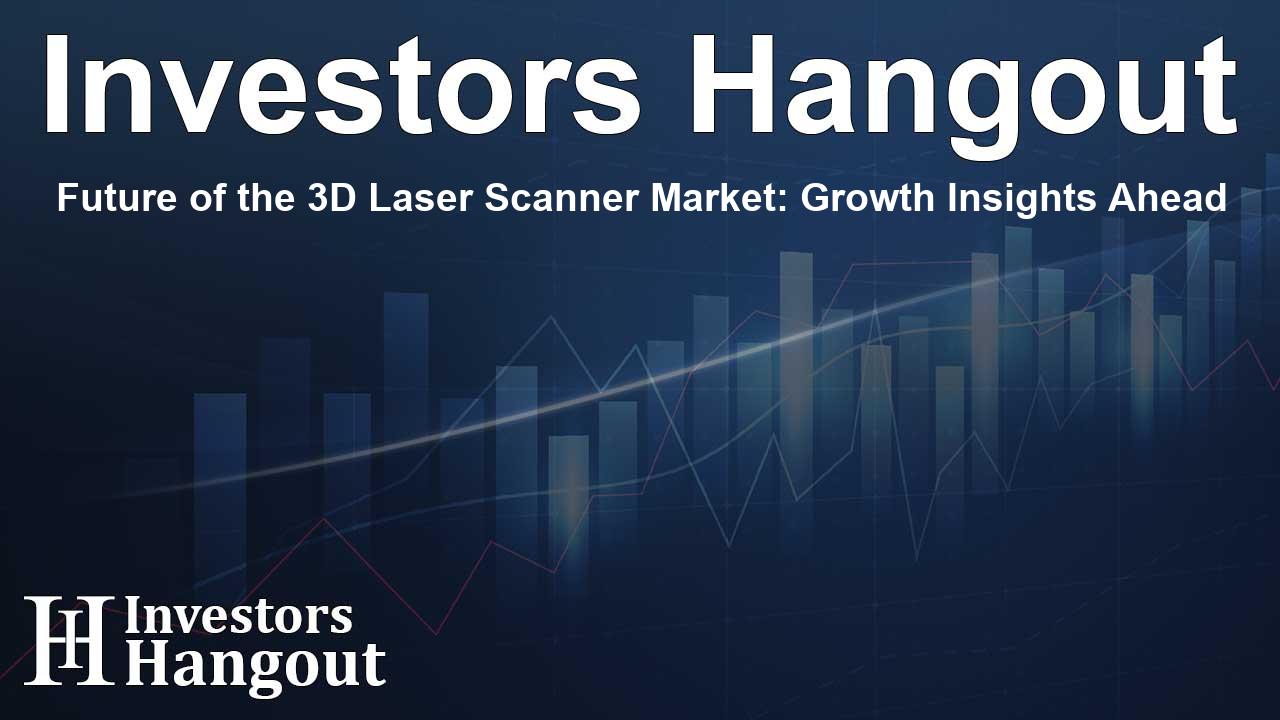Future of the 3D Laser Scanner Market: Growth Insights Ahead

Analyzing the Growth of the 3D Laser Scanner Market
As the world becomes increasingly digital, various industries are witnessing transformative changes. This is especially true for the 3D laser scanner market, which is estimated to grow from USD 1,988.4 million to an impressive USD 4,214 million by 2035. This robust growth reflects the advancements in technology and the expanding platform of applications that these devices serve. With a compound annual growth rate (CAGR) of approximately 6.6% projected during this period, the implications for both businesses and consumers are significant.
Technological Advancements Powering Market Expansion
The global 3D laser scanner market is largely driven by cutting-edge technology. These scanners leverage lasers to capture the intricate geometry of objects with precision and detail. The versatility of these devices allows them to serve a multitude of sectors, such as construction and healthcare, reinforcing their necessity in today’s complex industrial landscape.
Applications Across Diverse Industries
In industries from automotive to aerospace, the adoption of 3D laser scanning technology is on the rise. The construction industry, in particular, has embraced this innovation for mapping and real-time monitoring. With the introduction of Building Information Modeling (BIM), professionals can now utilize 3D scanners to improve project accuracy and reduce potential human errors. Furthermore, the healthcare sector employs laser scanning for various applications, including medical imaging and creating customized prosthetics.
Investment in Infrastructure and Smart Cities
Investment trends in infrastructure development and evolving urban landscapes, or smart cities, are placing added emphasis on the utility of 3D laser scanning. These projects require meticulous planning and execution, where accurate digital mapping plays a crucial role. As governments actively seek sustainable urban solutions, the demand for advanced scanning technologies is expected to climb.
The Role of Automation and AI Integration
The relationship between 3D laser scanning and automation cannot be understated. With emerging technologies such as artificial intelligence (AI) and machine learning increasingly integrated into these devices, industries are tapping into new possibilities for efficiency and accuracy. This combination not only expedites processes but also enhances the analytical capabilities of the data collected, leading to smarter decision-making.
Challenges Facing the Market
Despite the optimistic projections for the 3D laser scanner market, challenges remain. High initial investment costs can deter small and medium enterprises (SMEs) from adopting this technology. Furthermore, operational expenses such as maintenance and the need for specialized personnel training can stretch financial resources thin. These factors may slow down market penetration in certain areas.
Data Challenges: Processing and Storage
Along with costs, the computational requirements for processing the extensive data generated by 3D laser scanners can also create bottlenecks. Industries must ensure robust storage solutions and advanced software capabilities to handle the vast amounts of data effectively. This adds another layer of complexity that needs addressing to fully capitalize on the benefits these scanners offer.
Competitive Landscape of the 3D Laser Scanner Market
The competitive landscape of the 3D laser scanner industry features several key players committed to innovation and quality. Companies like FARO Technologies and Hexagon AB are at the forefront, offering cutting-edge measurement and imaging solutions. The focus remains on developing products that not only meet high precision standards but also provide cost-effective and efficient options for diverse applications.
Looking Ahead: Future Market Dynamics
As we look to the future, the 3D laser scanner market seems poised for substantial growth. Increased collaboration between sectors, advancements in technology, and an expanded footprint in industries like aerospace and health care will reshape the dynamics of this market. The trend towards smart city development and infrastructure investment ensures that these devices will be integral in shaping tomorrow's landscapes.
Frequently Asked Questions
What factors are driving the growth of the 3D laser scanner market?
The growth is primarily driven by technological advancements and increasing applications across various industries such as construction, healthcare, and aerospace.
What are the major challenges in adopting 3D laser scanning technology?
High acquisition and maintenance costs, along with data processing and storage limitations, pose significant challenges for adoption.
How is AI influencing the 3D laser scanner market?
AI is enhancing the efficiency and accuracy of 3D scanning processes, enabling better data analysis and decision-making.
What industries are utilizing 3D laser scanners?
The automotive, aerospace, construction, and healthcare industries are heavily utilizing 3D laser scanners for various applications.
What is the projected market value of the 3D laser scanner market by 2035?
The market is projected to reach USD 4,214 million by 2035, reflecting significant growth opportunities.
About The Author
Contact Dominic Sanders privately here. Or send an email with ATTN: Dominic Sanders as the subject to contact@investorshangout.com.
About Investors Hangout
Investors Hangout is a leading online stock forum for financial discussion and learning, offering a wide range of free tools and resources. It draws in traders of all levels, who exchange market knowledge, investigate trading tactics, and keep an eye on industry developments in real time. Featuring financial articles, stock message boards, quotes, charts, company profiles, and live news updates. Through cooperative learning and a wealth of informational resources, it helps users from novices creating their first portfolios to experts honing their techniques. Join Investors Hangout today: https://investorshangout.com/
The content of this article is based on factual, publicly available information and does not represent legal, financial, or investment advice. Investors Hangout does not offer financial advice, and the author is not a licensed financial advisor. Consult a qualified advisor before making any financial or investment decisions based on this article. This article should not be considered advice to purchase, sell, or hold any securities or other investments. If any of the material provided here is inaccurate, please contact us for corrections.
